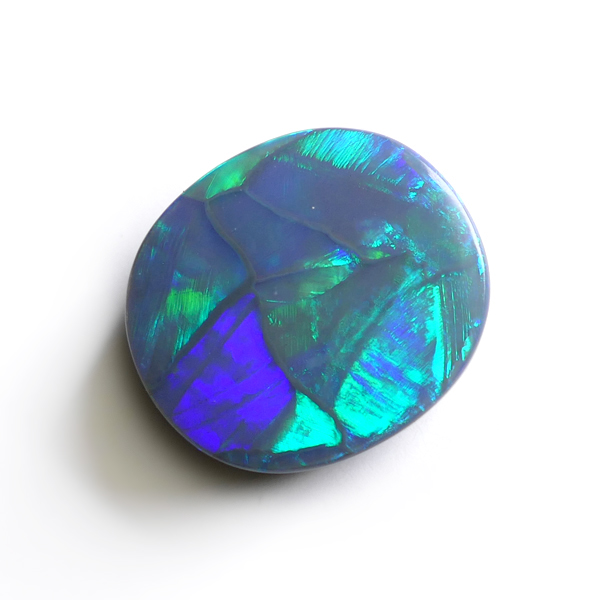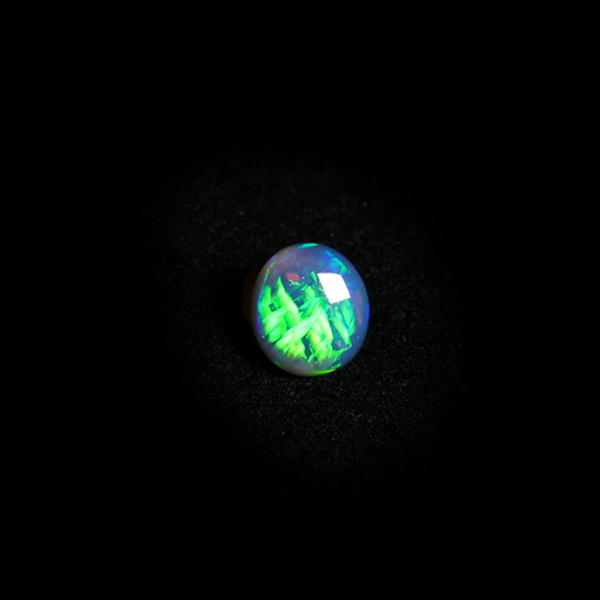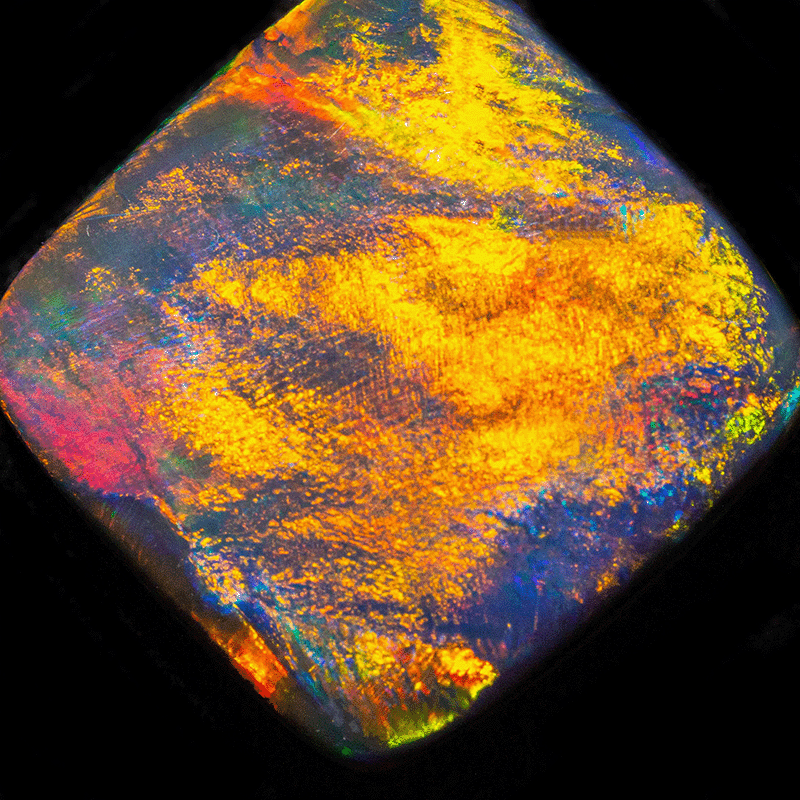Opal Patterns
Opals are known for their unique play-of-color, where flashes of red, green, blue, and other colors appear as the stone is moved under light. While color is a key characteristic, the pattern in which this color appears is just as important. Patterns can vary widely and play a significant role in how opals are identified and appreciated. Among the most distinctive are the Harlequin, Chinese Writing, Pinfire and Moss patterns.
Harlequin Pattern

The Harlequin pattern is one of the most recognized and rare patterns found in opals. It consists of a repeating arrangement of angular color patches, usually in the form of squares, rectangles, or diamonds. These patches are clearly separated and often arranged in a grid-like pattern. The colors are typically bright and cover a range of hues, and the pattern is evenly distributed across the surface of the stone.
This pattern is most commonly found in black opals, particularly those from Lightning Ridge in Australia. The evenness and definition of the color patches are important factors when identifying a true Harlequin pattern, as many opals display similar but less organized patterns that do not meet the strict criteria.
Chinese Writing

The Chinese Writing pattern is named for its resemblance to written characters or calligraphy. It features irregular, fine lines and streaks of color that look like symbols scattered across the stone. Unlike the geometric layout of the Harlequin pattern, this type appears more random and abstract.
Chinese Writing patterns are typically seen in white opals or crystal opals. The pattern does not follow a regular structure but is appreciated for its unique and expressive appearance. Its value often lies in its unusual presentation, which sets it apart from more common patterns.
Pinfire Pattern

The Pinfire pattern is recognized by its tiny, evenly spaced flashes of color that appear as fine pinpoints across the surface of the opal. These small bursts of red, green, blue, or other hues create a sparkling, star-like effect that shimmers consistently as the stone is moved under light. This pattern gives the opal a refined, almost granular look, and is especially appealing when viewed up close.
Pinfire is commonly seen in both white opals and black opals, particularly in stones with a fine and uniform internal silica structure. While it may appear subtle compared to broader color patterns, pinfire offers a delicate and consistent play-of-color that is both elegant and eye-catching. It’s a popular choice for those who appreciate understated beauty and detailed visual texture in natural gemstones.
Moss Pattern

The Moss pattern features irregular, organic formations that resemble plant growth, branching roots, or veined inclusions within the stone. These color formations often spread in layered or web-like patterns, creating a natural, earthy appearance that can vary widely from stone to stone. This gives each moss opal a unique, landscape-like visual effect that becomes more engaging the closer you look.
Moss patterns are most often found in boulder opals, white opals, and crystal opals, and are admired for their resemblance to nature. Rather than showing structured flashes, moss-patterned opals highlight a more abstract and organic beauty. They often appeal to collectors and designers seeking opals that feel raw, natural, and rich with visual texture—like a snapshot of nature frozen inside the stone.